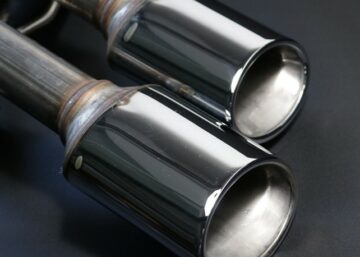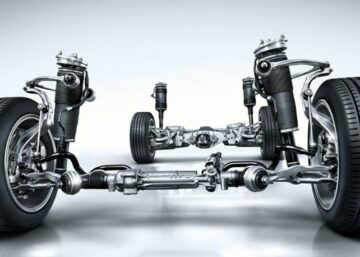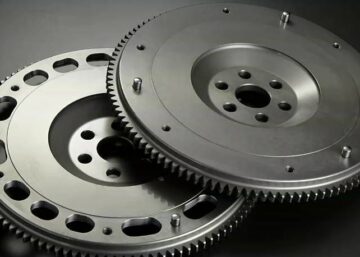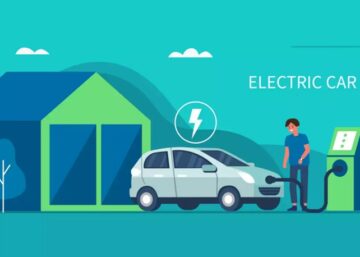Automotive exterior lighting comprises different lighting components located at the exterior part of a vehicle and functioning in the illumination, an indication of intent, or signaling while driving. Each lighting that makes up the automotive exterior lighting is a critical car part name.
Making the lighting component, like any auto part, is an important part of the automotive design process, and it can be challenging without properly understanding the lighting. As a result, this article extensively discusses exterior lighting for cars exterior, the different types, and the design considerations and development process.
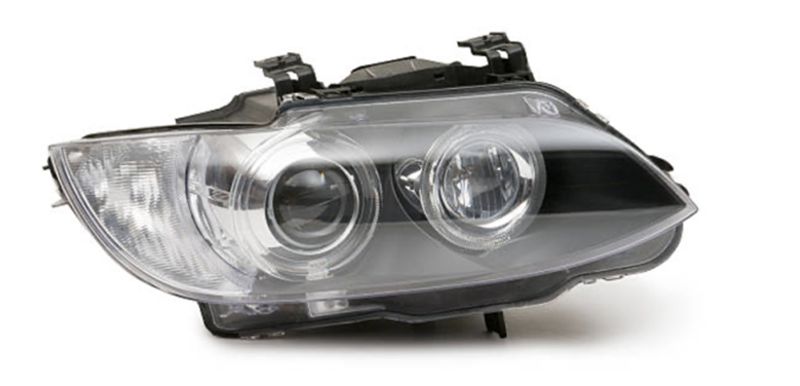 Components of Automotive Exterior Lighting
Components of Automotive Exterior Lighting
Every automotive exterior light has several core components that allow it to function in illumination, indication, and signaling to the drivers or other drivers. Below are the core components of exterior car lights.
1. Bulbs or Light Sources
Every exterior car light has a bulb or light source responsible for generating the light in the system. The light source continues to evolve in the different types utilized in the automotive industry.
Nevertheless, common types include the halogen bulb, which is the most widely used. The Xenon high-intensity discharge bulb produces bright bluish-white and better visibility hence its use in fast cars, and LED bulbs known for their energy efficiency
2. Reflectors
Reflectors are responsible for controlling and directing the light bulbs’ emitted light. They come from different materials depending on the type of exterior car light. For example, headlamp reflectors are made from polished metals having a shape that allows the emitted light to be focused on the road ahead. In the tail light, the reflectors function more in amplifying the light such that it is very visible.
3. Lenses
Lenses, reflectors, and light sources are responsible for the shape and direction of the emitted light. Furthermore, they function in protecting the light source. Lenses are made using several materials depending on the type of exterior car light. For example, the headlight lenses are made using polycarbonate or glass.
No matter the material, the lenses can also come in different designs and textures, which allow the automotive light to have specific patterns.
4. Housing
The light housing is an enclosure containing the automotive exterior light components. It functions in protecting and supporting the other components. Hence, they are made using sturdy materials such as hard plastic, aluminum, and steel that can withstand external and harsh environmental conditions.
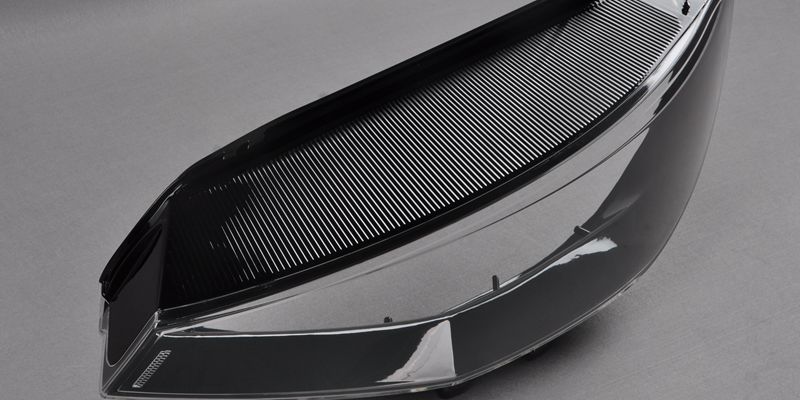 Functions and Purposes for Exterior Car Lights
Functions and Purposes for Exterior Car Lights
Every type of automotive exterior light has its functions depending on the location. Those at the front of a car are called the headlamp, and those at the back are the tail light. Automotive exterior lighting is important in vehicles as they serve the following functions:
1. Visibility
Headlights, a type of automotive exterior light, act as an illumination source, ensuring drivers can easily see the road during travel. Generally, they have a design that provides a focused and controlled beam of light, allowing the driver to see obstacles, road signs, and pedestrians.
2. Signaling
Automotive exterior lights, especially the tail and side lights, are critical in signally other drivers about a decision during driving. For example, the brake light at the vehicle’s rear will shine when the driver applies it, indicating to other drivers that they should also slow down. Other such as the turn signal located at the vehicle’s front and rear, allows the driver to indicate the decision to turn to the left or right.
3. Safety
Some vehicles have some types of automotive exterior lights that help in safety on the road. For example, Daytime Running Lights (DRLs) are low-intensity lights with a running engine. As a result, the vehicle becomes more visible during daylight hours and reduces the risk of accidents. Another type of light is the fog light with a penetrating beam that helps improve driver visibility and reduces glare.
4. Aesthetics
Car exterior lights are also a form of aesthetics evident in their applications in sports cars. Manufacturers of such cars as Bugatti, Lamborghini, and Pagani Huayra incorporate specially designed light with other elements to enhance the vehicle’s appearance and improve its overall visual appeal without reducing their functional value.
Typical Materials of Exterior Car Lights
There are several types of materials suitable for making automotive exterior lights. Each material has its features, and selecting the right material depends on the type of exterior car light, the need for durability, clarity, and resistance to environmental conditions. Common materials used in constructing exterior car lights include:
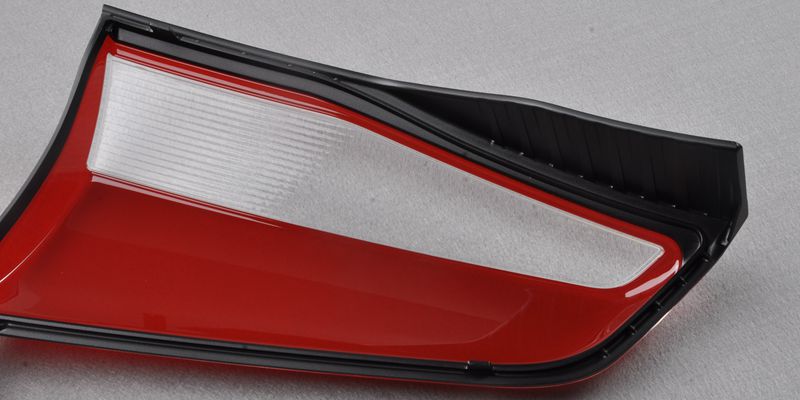 1. Polycarbonate
1. Polycarbonate
Polycarbonate is an automotive exterior light material used for making the lens of the light. It is durable, lightweight, and offers optical clarity, impact, and UV resistance. The materials can withstand harsh environmental conditions and situations, making them suitable for housing the light.
2. Glass
Glass is also applicable instead of polycarbonate for making lenses in high-end cars. While the impact resistance might not be good, glass lenses are scratch resistant, optically clear, and do not yellow over time
3. ABS and PMMA
Plastics such as ABS and PMMA are used to make components that house the lighting component and other non-optical parts of the automotive exterior light. They are lightweight, durable, impact-resistant, and cost-effective solutions
4. Aluminum
Metals such as aluminum are applicable in constructing reflectors and housing in some high-end cars. The aluminum car part is chosen because of its light weight and ability to dissipate heat generated by the light source easily.
5. Sealing Materials
Many automotive exterior lights come with a sealing material made from silicon or rubber that protects the internal components of automotive exterior lights from moisture, dust, and other contaminants. As a result, they help ensure the lighting functionality and longevity.
Every material used in the automotive exterior lights must be carefully selected based on the specific requirement of the component. Furthermore, they should be rigorously tested for reliable performance before use.
Types of Automotive Car Lights
Understanding automotive exterior lighting is only achievable by understanding the different types. Below are the common types of exterior car light and their function.
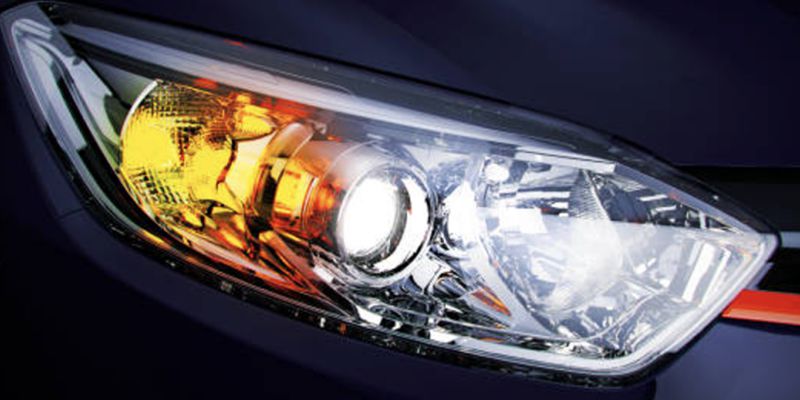 1. Headlight
1. Headlight
The headlights are the primary light source on any vehicle, providing drivers with visibility during low light conditions and nighttime. Headlight comes with different types of light source, including halogen, LED, and xenon (HID), with each type having a certain level of efficiency, brightness, and longevity.
2. Taillights
Taillights are located at the vehicle’s rear and function in signaling such as breaking and turning intension. They are most time red and feature multiple bulbs. Examples include brake lights which indicate that a car wants to stop. Turn signal lights indicate that the car wants to turn to the left or right, and reverse lights.
3. Daytime Running Lights (DRLs)
They are low-intensity lights that automatically turn on when the vehicle is running. They enhance the car’s visibility to be noticeable to other drivers.
 4. Fog Lights
4. Fog Lights
They are located at the vehicle fronts and have high-intensity, wider and short beams, allowing them to enhance visibility in low-light conditions such as dense fog, rain, or snow.
5. Turn Signal
Turn signals or indicators/blinkers are positioned in the vehicle’s front and rear. They emit a flashing light indicating the driver’s desire to turn or change lanes.
6. Brake Light
Brake lights at the vehicle’s rear illuminate the road when the driver applies the brakes. As a result, other drivers are warned about your decision to slow down or stop. Due to the situation, brake lights are always brighter than other rear lights.
Design Considerations for Automotive Exterior Lighting
Before making an automotive exterior light, there are a few designs consideration to make:
1. Legal Regulations
All automotive exterior lighting must comply with the car light regulations’ requirements regarding the light output, beam patterns, color, positioning, and visibility. This can affect the choice of components to manufacture such light, and manufacturers should ensure that their lighting designs meet these regulations to ensure safety and legality.
2. Styling and Aesthetics
Automotive exterior lighting contributes to the overall aesthetics and styling of a vehicle. Designers consider the lights’ shape, size, and arrangement to create a cohesive and visually appealing design that aligns with the vehicle’s brand identity.
3. Aerodynamics
Automotive exterior lights should have a streamlined design to reduce drag and reduce fuel consumption. While this may not be so essential for lighting, it is very important to consider. Important ways to reduce drag are to optimize the shape and design, integrate with the body panel, and enable auxiliary cooling. In shape and design, smooth and streamlined shapes have less drag than protruding ones.
4. Light Distribution
To ensure proper light distribution for optimal visibility and minimizing glare, designers should use the right material for making the light-influenced component, such as the reflectors, lenses, and optical systems
5. Energy Efficiency
To optimize the efficiency of energy used, the energy efficiency of the light system should be well considered. Generally, LED lights have lower power consumption than traditional halogen or xenon lights.
Automotive Exterior Lighting Design and Development Process
To make automotive exterior lighting, below is the design and development process utilized in custom automotive light manufacturing.
1. Conceptualization of the Lighting Design
Here, the designers will generate ideas on the lighting systems, such as the vehicle’s design language, functional requirements, and regulatory constraints.
2. Creating a 3D Model
Designers use computer-aided design (CAD) software to create detailed 3D models of the lighting components. This allows them to visualize the design, assess its feasibility, and make necessary adjustments before moving to the prototyping stage.
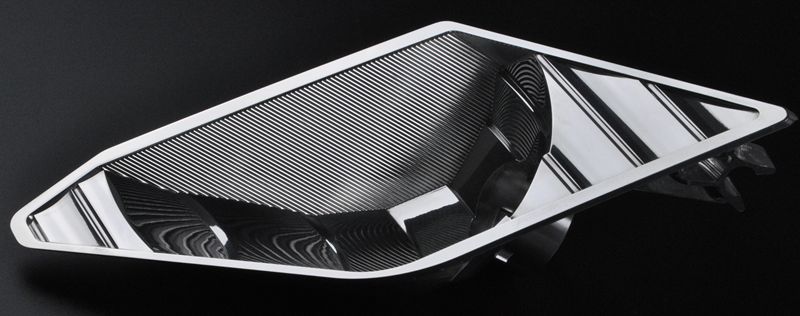 3. Prototyping and Testing
3. Prototyping and Testing
Prototyping involves building physical models of the lighting components to evaluate their form, fit, and functionality. Prototypes are made using processes such as 3D printing or CNC machining, and each prototype should undergo rigorous testing, including photometric testing, vibration testing, and environmental testing. This will ensure that lights meet performance standards and durability requirements.
4. Manufacturing and production
After validating the prototypes, the manufacturing process should begin. The choice of manufacturing process depends on the material, with casting and injection molding ranking high on the choice of the manufacturing process. Manufacturing involves selecting appropriate materials, sourcing components, and setting up production lines. Afterward, the different components of the lighting system are assembled and integrated into the vehicle’s body.
Get Automotive Lighting Prototyping Services for Your Projects
WayKen is a reliable rapid prototyping and manufacturing service provider for automotive manufacturers and designers needing high-quality lighting prototypes. We specialize in automotive exterior lighting prototyping and custom car part manufacturing services, including CNC machining, 3D printing, vacuum casting, and injection molding.
We are highly experienced in lighting design and development and can assist you in bringing your lighting concepts to life efficiently. Our commitment to quality, precision, and timely delivery makes us a trusted partner in the automotive industry. Get a free quote today to start a new project!
Conclusion
Automotive exterior lightings are components in the vehicle’s external part that illuminate the road and indicate decisions, thereby making the road safe. By understanding the system, manufacturers and designers can create lighting systems that meet regulatory requirements, function, and improve the aesthetics of vehicles.
FAQs
Are LED headlights better than traditional halogen headlights?
LED headlights have brighter light compared to the traditional halogen light. Furthermore, they consume less power and fuel, have a longer lifespan, and need lesser maintenance and replacement. However, they are more expensive upfront.
Can I upgrade my vehicle’s headlights to LED headlights?
Yes, it is possible in most cases. However, check the compatibility of LED headlights with your vehicle model, as some vehicles may require additional wiring or modifications. A better option is to consult a professional or read your vehicle manufacturer’s guidelines on how to go about it
Which manufacturing process should I choose for the exterior lighting of the car?
The choice of manufacturing process depends on the type of component you want to manufacture. For example, CNC machining is suitable for making the reflector and housing, while injection molding is an ideal choice for mass production. Other complex testing components are compatible with 3D printing.
